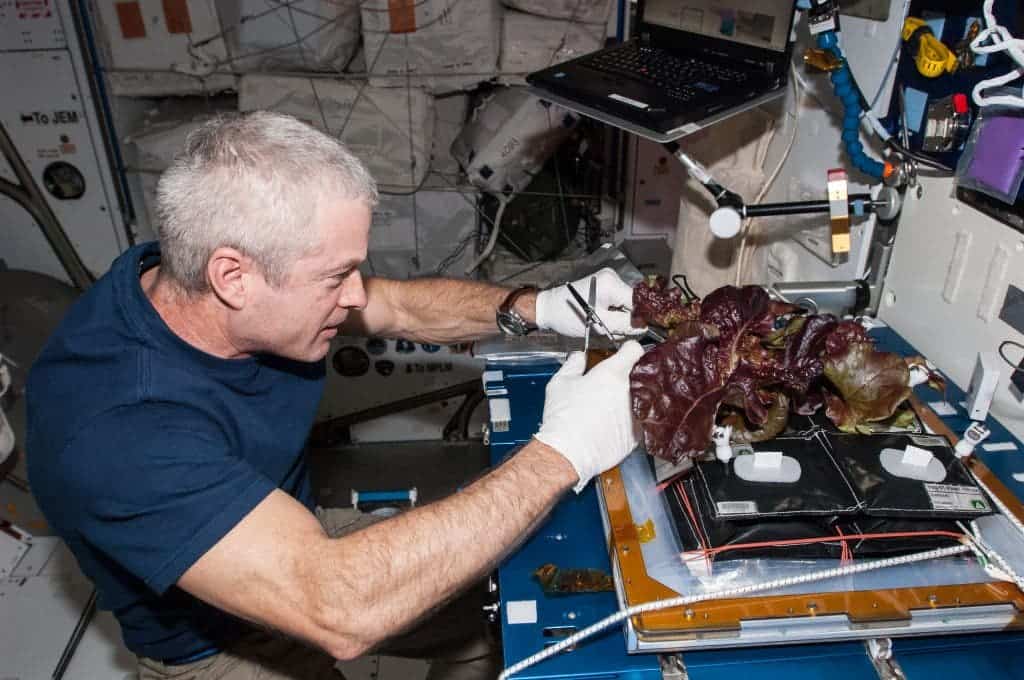
We were telling you a while ago about NASA growing vegetables in space, on the International Space Station. So far, the project has been successful, and everything has worked out fine – so it’s harvest time! In this picture we see American astronaut, Steve Swanson, harvesting lettuce grown on board the ISS.
“Expedition 40 commander, harvests a crop of red romaine lettuce plants that were grown from seed inside the station’s Veggie facility, a low-cost plant growth chamber that uses a flat-panel light bank for plant growth and crew observation. For the Veg-01 experiment, researchers are testing and validating the Veggie hardware, and the plants will be returned to Earth to determine food safety.”, the picture description reads.
The experiment has many purposes. First of all, NASA wants to see if plants will grow normally in microgravity, to see any difference in growth patterns. Also, in the short run, it will increase the quality of life of astronauts onboard the ISS, and in the long run, it may prove pivotal for long term space travel.
“The farther and longer humans go away from Earth, the greater the need to be able to grow plants for food, atmosphere recycling and psychological benefits,” Dr. Gioia Massa, leader of the Veggie project said. “I think that plant systems will become important components of any long-duration exploration scenario.”






